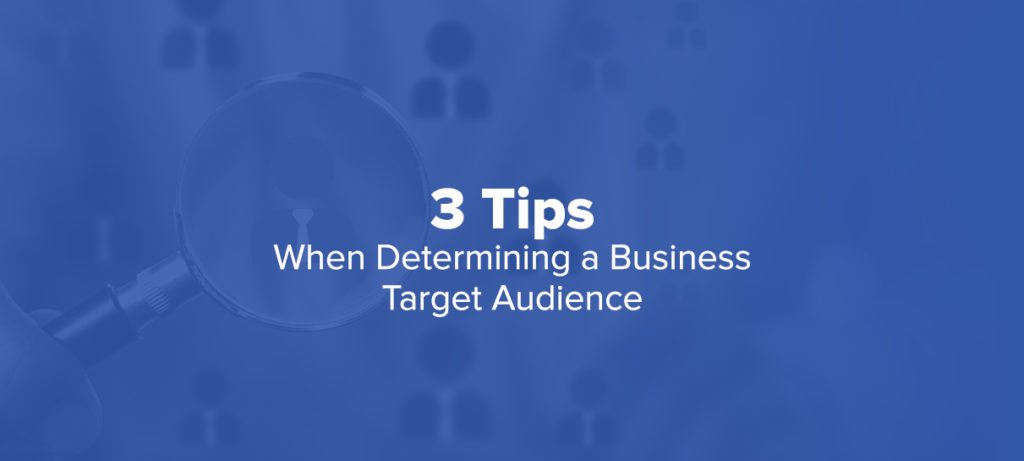3 Tips when Determining a Business’ Target Audience
Data is what drives an effective advertising campaign. The days of running ads in a place where “everyone sees them” are over. Consumers engage with media in so many different ways it is impossible to reach the masses in just one form of advertising (unless you have $5,000,000 to run a 30 second ad during the superbowl).
With technology being used in advertising, businesses are able to target audiences so specifically, making marketing efforts much more efficient. Because of this targeting capability, it is important for businesses to really understand their Target Audience.
Here are 3 tips when determining your business’ target audience.
Who generally purchases from your business?
This is information you can gather using a few different methods. The first is obvious. When interacting with customers, generally who do you see making the purchase decisions? This can be determined using basic demographic information:
- Age
- Gender
- Income
- Geography
Let’s break this down using a bridal store. We can assume the majority of customers are females between the ages of 18 and 45. Income would not be too much of a factor considering the majority of brides would be shopping for wedding dresses. Lastly, in this example let’s assume this particular business owner sees most of their customers coming from within a 20 mile radius of the store.
It goes without saying that this hypothetical business will likely have customers outside of the demographic parameters we just listed, but when looking for a target audience we want to reach an audience that we mostly see purchase from the business.
Another way to find this data may or may not be available to your business, and that is to use CRM data to find customer information. CRMs, if the data is imported correctly, can be searchable to find data about your customers. This will be a more precise way of determining information about your customers, rather than using your memory to gather this data.
Forget about the outliers!
Like we discussed in the last tip, we are looking for the majority of customers we see. Business owners love to talk about that one customer that drove from out of state, uphill both ways, to visit their business. It is fantastic that business has a loyal customer, but that customer does not represent the majority.
Running a targeted advertising campaign allows a business to reach a particular audience. When determining how to spend a marketing budget, targeting that out of state area that ONE customer came from isn’t going to convert customers effectively.
Don’t get “paralysis by analysis”!
With advertising options like Programmatic Advertising, advertisers can basically reach as niche of an audience as they’d like using demographics as well as behaviors. This doesn’t mean that have to. In fact, many times it can be a large wasted opportunity.
Let’s use a Ford dealership as an example. This particular Ford dealership is looking to run a targeted programmatic display advertising campaign that will drive sales for Ford F-150s (Fords number one selling pickup truck).
This dealership knows that their target market is Men, ages 37-58, work a blue collar job, have purchased an F-150 in the past, with a need to tow. It is fantastic this dealership truly understands their buyer. With programmatic advertising, this dealership would have the capability to target exactly that buyer.
The problem with this approach is this dealership would be missing out on a large group of potential buyers. There are a large group of pickup truck owners that likely are not satisfied with the current pick up truck they own, and may be shopping for a different model. There is a large audience of white collar workers that also enjoy driving a pickup truck. And there are certainly pickup truck owners that do not need to tow anything, but enjoy the luxuries of owning a pick up truck.
A better way to target this audience would be to target “Pickup Truck Intenders” rather than “Ford-150 Intenders.” This way we can reach an audience that may own a different model pick up truck, but could show interest in the Ford F-150. If this audience is a “Pickup Truck Intender” does it really matter what age, gender, income, or work status they are?
Overview
It is important for every business to identify their target audience. Advertising has changed, and leverages data that can target the exact audience your business is looking to reach. This doesn’t mean we have to reach this audience. Find your business’ sweet spot, and take a shot. Advertising is a marathon, you can always tweak your targeting over time if new data is collected.
I really hope my target audience reads this: marketing professionals!
